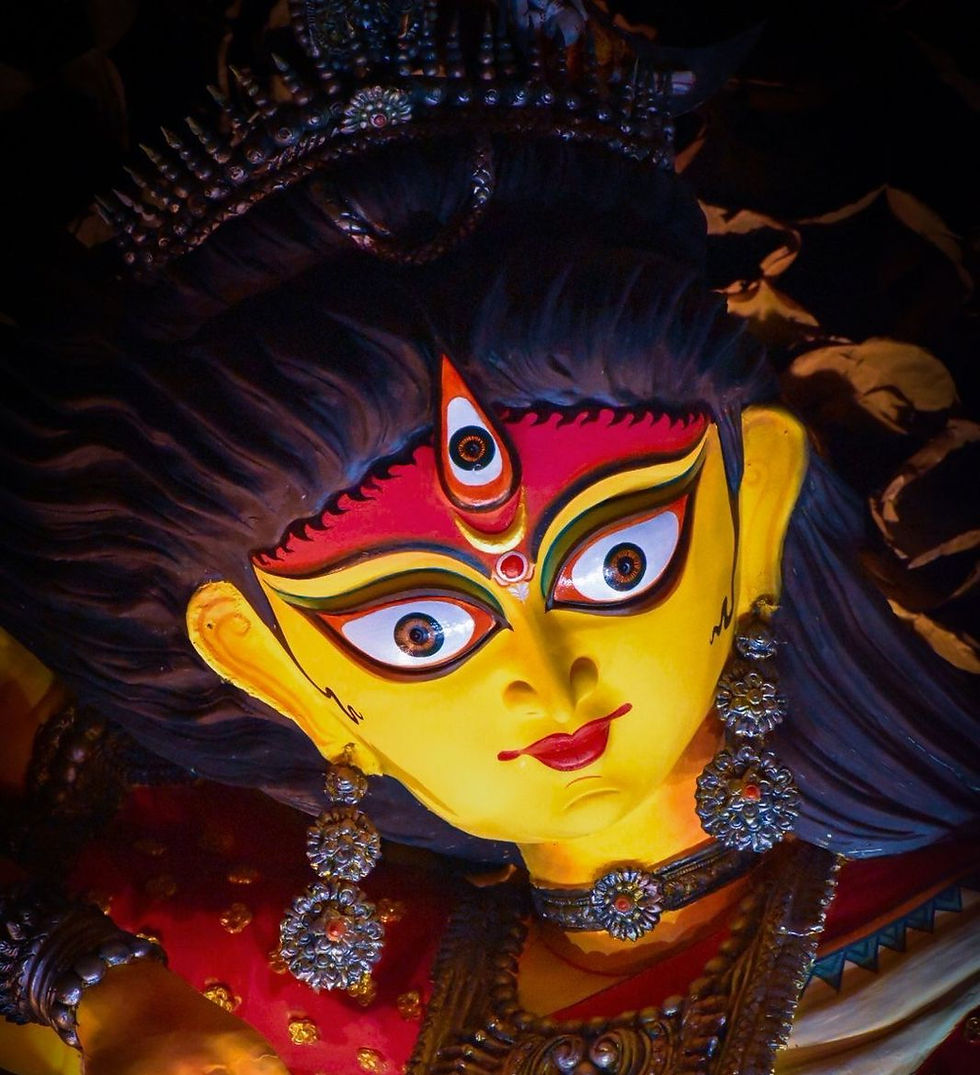The "Durga Saptashati" is a part of the Markandeya Purana. Just as the Vedas are eternal and without a beginning, so too is the Saptashati. The Durga Saptashati consists of a total of 13 chapters, which describe the divine narrative of the Goddess in 700 verses.
There are primarily three narratives: -
First Narrative: Chapter 1: The praise of Goddess Mahakali.
Middle Narrative: Chapters 2-4: The praise of Goddess Mahalakshmi.
Final Narrative: Chapters 5-13: The praise of Goddess Mahasaraswati.
There are numerous methods to perform the Durga Saptashati, such as the general method, weekly recitation, Samput Path method, Sarda Navchandi method, and Shatchandi method. Among these, the weekly recitation method is very simple and can be easily done at home.
On the first day, before starting the Durga Saptashati, one should recite the Navarna Mantra "ॐ ऐं ह्रीं क्लीं चामुण्डायै विच्चे" 108 times. Each day, before beginning the recitation, one should read the Argala, Durga Kavach, Keelak Stotra, the 108 names of the Goddess, and the Sarva Kamna Siddhi prayer. At the end of the recitation, one must read the prayer for forgiveness.
PRECAUTIONS REQUIRED WHILE RECITATION OF DURGA SAPTASATI
i) When performing the recitation of the Durga Saptashati, one must pay special attention to purity. This includes purity of the body, mind, place, the seat (where one sits), and the mouth/tongue.
ii) It is forbidden to hold the book of Saptashati in your hands while reciting. Therefore, the book should be placed on a base or support before beginning the recitation.
iii) Do not recite mentally; instead, one should recite aloud with clear pronunciation in a moderate tone. It is stated that the Goddess herself observes the recitation, thus clear pronunciation in a moderate tone is necessary for effective results. Those who are not versed in Sanskrit may also chant in Hindi. During the intense period of Durga Navratri, it is important to observe celibacy (Brahmacharya).
iv) The use of the words 'इति ', 'अध्याय: ', and 'वध ' at the end of chapters is prohibited.
v) The Six Angam of Durga Saptasati is called-
1) kawach
2) Argala
3) Keelak
4) Pradhanik Rahasya
5) Vaikritik Rahasya
6) Murti Rahasya
vi) When reciting the Durga Saptashati, one should follow the sequence below:
Kavach
Argala
Keelak
Ratri Sukta (Hymn of the Night)
108 recitations of the Navarna Mantra with Nyasa
Recitation of the 13 chapters of the Durga Saptashati
108 recitations of the Navarna Mantra with Nyasa again
Reading of the Three Rahasya- (Pradhanik, Vaikritik, and Murti Rahasya)
Kshama Prarthana Stotra (Prayer for Forgiveness)
Japa Samarpan (Offering of the Japa)
During Navratri, the Goddess is extremely pleased by reading or listening to the Durga Saptashati. The full benefits of the recitation are achieved only when it is done in its original language, Sanskrit. One should understand Sri Durga Saptashati as the very form of Goddess Durga herself.
If someone is unable to perform daily worship throughout Navratri, they should definitely perform special worship on the eighth day (Ashtami Tithi). In ancient times, the formidable Goddess Bhadrakali, who destroyed Daksha's yajna, manifested along with millions of Yoginis on this very Ashtami Tithi.
These are a few fundamental and crucial methods for reciting the Durga Saptashati. Additionally, there are methods for establishing the kalash (sacred pot) and performing various poojas, which are too extensive to detail here.
It's always recommended to adhere to these rituals with strict discipline under the guidance of a knowledgeable Guru or family priest. It's not advisable to learn the recitation of the Durga Saptashati from online charlatans, as these practices are sacred and should be kept confidential, not broadcasted on social media for likes and follows.
The wrath of the Goddess is formidable; thus, it is imperative to employ the correct traditional methods when reciting the Durga Path. According to the Puranas, many of the mantras are esoteric and should not be imparted to non-believers or those whose worship is merely a facade of religiosity.
नमोदेव्यै महादेव्यै शिवायै सततं नम:।
नम: प्रकृत्यैभद्रायैनियता:प्रणता:स्मताम्॥
*******************************

.png)
Comentarios